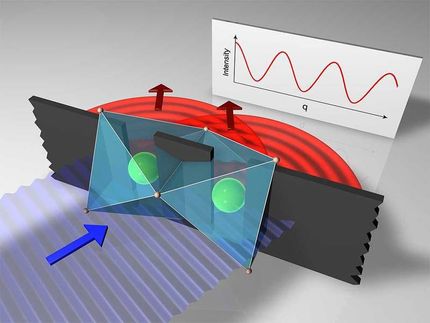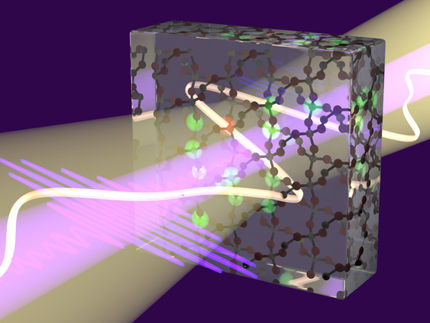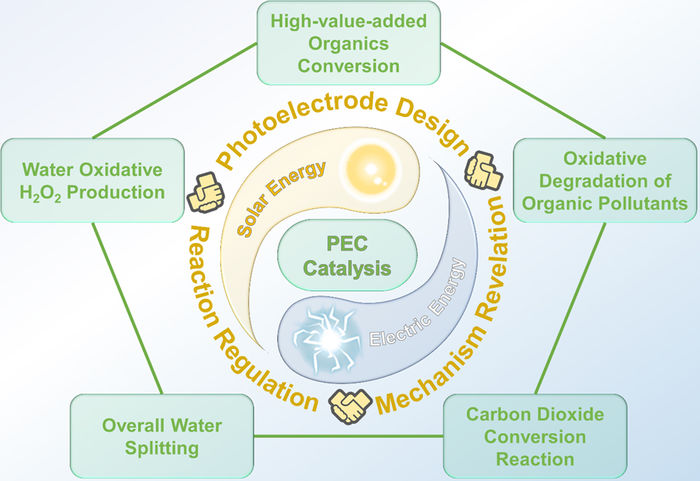Crystal surprise
High-pressure experiments reveal new forms of a silica
By compressing the rare mineral coesite an international team of scientists has discovered unexpected forms of silica with unusual crystal structures. The findings could have direct implications not only for the understanding of silicate liquids in the deep interior of Earth, but also for theories of planet formation, as the team lead by DESY scientist Elena Bykova reports in the journal Nature Communications.
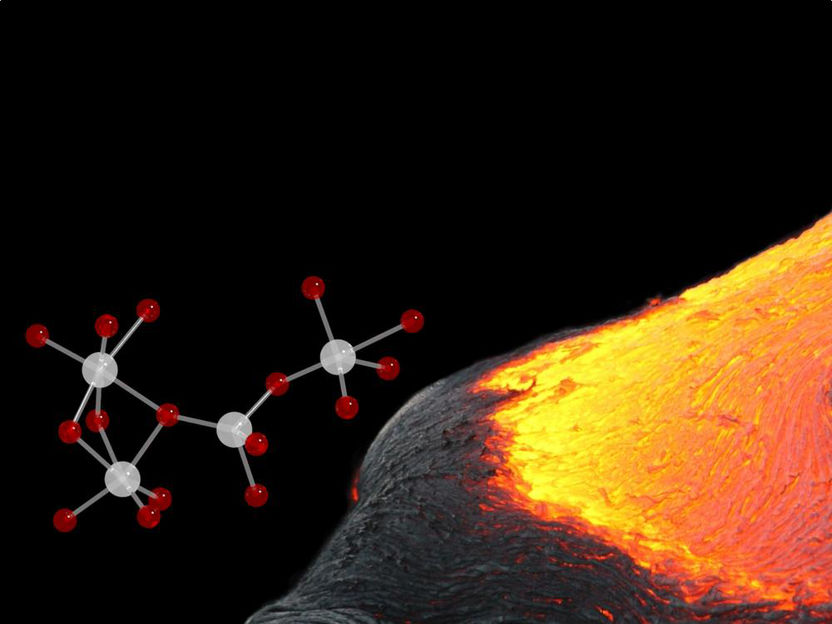
The newly discovered high-pressure variants of the mineral could fundamentally change the picture of the geochemistry of silicate melts in Earth's interior.
DESY, Elena Bykova
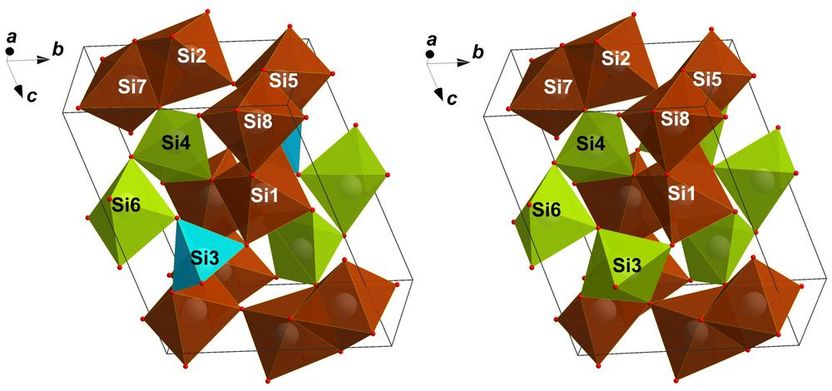
Crystal structures of coesite-IV (left) and coesite-V above 300,000 atmospheres. Si2 and Si7 octahedra share faces.
DESY, Elena Bykova

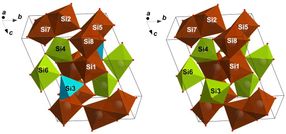
Coesite is a high-pressure configuration of common silicon dioxide (SiO2) and sometimes occurs in rocks on Earth's surface that were hit by a meteorite. To investigate the crystal structure of the mineral at high pressure, the scientists subjected a small coesite crystal, measuring just 0.03 millimetres, to 700,000 times the atmospheric pressure and illuminated it with a bright X-ray beam. The X-rays are diffracted by the crystal in a characteristic way that reveals its inner structure.
The results of the experiments at the Extreme Conditions Beamline (P02.2) of DESY's X-ray source PETRA III came as a surprise: Instead of the conventional framework of tetrahedra that usually form coesite's structure, the experiments revealed two previously unknown high-pressure modifications, coesite-IV and coesite-V, consisting of a mix of tetrahedra, octahedra and polyhedra of silicon connected to five oxygen atoms. The latter structural element has never been observed in any silica compound before.
Also, the newly identified forms of silica containoctahedra of silicon that share faces, a structural element that is usually “forbidden” in classical crystal chemistry and has never been seen in any silica compounds, silicates or glasses. “It took one year of verification, including re-measuring at other synchrotron facilities all over the world to prove that the determined structure is correct,” remembers Bykova. Confirmation measurements were done at the European Synchrotron Radiation Facility ESRF in Grenoble and at the Advanced Photon Source APS in Chicago.
The scientists teamed up with the theory group of Igor Abrikosov at the Russian National University of Science and Technology in Moscow and at Linköping University in Sweden who calculated the stability of the new coesite forms. These theoretical calculations corroborate the experimental findings, although the newly discovered structures would not have been easy to predict, as Abrikosov stresses.
For both forms, coesite-IV and coesite-V, scientists calculated the so-called pair-distribution functions that describe the distribution of interatomic distances, and they closely reproduced the experimental data recently reported by other researchers for compressed silica glass. This indicates that the findings of the new study can have implications for other silicate and silica compounds as well. The investigated pressure range corresponds to the conditions in Earth's mantle.
“If face-sharing octahedra are present in silicate liquids in Earth’s lower mantle, they may make silica melts more compressible than previously thought,” explains Leonid Dubrovinsky of Bayerisches Geoinstitut, who supervised the work.
The presence of “unconventional” structural elements like SiO5 polyhedra and face-sharing octahedra in silicate melts would decrease their density and cause a drop in the bulk sound velocity by about ten percent in the investigated pressure range. If silicate liquids with such properties are present in the lower mantle, they should be seismically detectable, says Dubrovinsky. “Unusual silica polymorphs may completely change our view of the structure of silicate melts at very high pressures and temperatures with direct implications for the theory of the formation of planets and its geochemical evolution. ”
Original publication
"Metastable silica high pressure polymorphs as structural proxies of deep Earth silicate melts"; E. Bykova, M. Bykov, A. Černok, J. Tidholm, S. I. Simak, O. Hellman, M.P. Belov, I. A. Abrikosov, H.-P. Liermann, M. Hanfland, V. B. Prakapenka, C. Prescher, N. Dubrovinskaia, L. Dubrovinsky; Nature Communications; 2018
